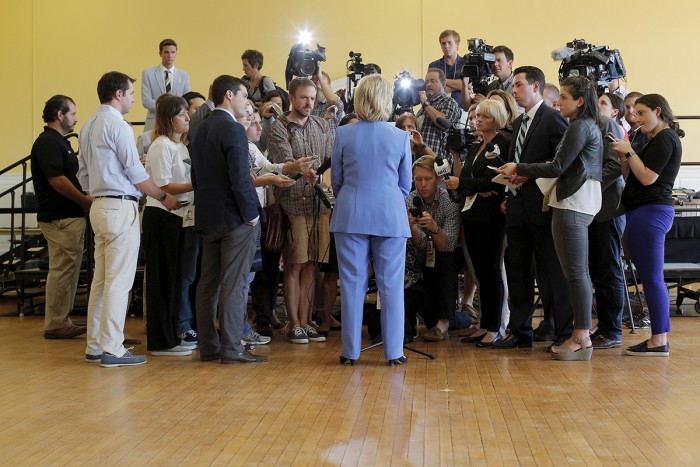
Editor’s note: There are a lot of great stories to read in the newest issue of our sister publication Nieman Reports. In the cover story, Washington Post White House bureau chief Juliet Eilperin writes about how shifting political strategies are forcing newsrooms to revamp how they cover elections.
Even in his first big presidential campaign, in a milieu where few people were short on confidence, Ted Cruz stood out for his self-assurance and conviction that he knew what was best for those who surrounded him.
He was a fresh face on the scene — as we all were — and he was full of promises. Cruz asked for people’s votes within moments of meeting them. And he spread word of his candidacy, complete with the image of his face, in the most modern, efficient way around: a photocopied flier. Tacked to a tree. Or in some cases, to a dorm-room door.
It was 1988. Cruz was 17 years old, a skinny kid from Texas who wanted to be president of the Princeton University Class of 1992. As a fellow class member, and aspiring journalist, I watched the race with passing interest. But it was not to be. Cruz was one of 12 candidates on the initial ballot, but didn’t make it past the primary. Michael Goldberg, an affable, smart kid from Cleveland, eventually won the election. Undaunted, Cruz sought the same position the next year and was again eliminated in the first round of voting. Another conservative Texan — Chad Muir, a popular lacrosse player everyone assumed would eventually run for the nation’s highest office — got more than three times as many votes.
Cruz did eventually make it onto student government, in 1990, and joined the committee on campus safety, the first of many prominent political posts he would hold over the course of his career. And over time his tools of voter outreach became increasingly sophisticated, to the point where in December of last year his current campaign for president mined the data of supporters who posed with Santa Claus in a dozen cities.
Tacking up fliers is ancient history. And, given the technological upheaval of the past four years, to say nothing of the past quarter century, so may be some of the conventions of traditional campaign reporting.
In a year in which there’s been a sprawling presidential race (at least on the Republican side), a fractured media landscape, and unprecedented opportunities for candidates to appeal directly to voters, campaigning and campaign coverage are being transformed. Candidates like Cruz and others are using sophisticated data-mining techniques to identify and target messages to increasingly refined demographic groups. Marco Rubio’s campaign curated and posted short video clips to appeal to specific demographics, and he encouraged voters to consult their second screens during debates. Hillary Clinton used Snapchat’s Live Story feature to send highlights of her first official rally to millions of the platform’s users. Clinton and Bernie Sanders — unfiltered by a television moderator — have conducted an entire line of debate on Twitter about the meaning of “progressive.”
Donald Trump’s triumphant use of social media has allowed him to reach enormous audiences to start and settle feuds, make observations both frivolous and frightening, and drive the news cycle into the ditch of his own choosing. In March, after a protester rushed the stage at a campaign event in Dayton, Ohio, Trump tweeted that the man was affiliated with ISIS. When Chuck Todd on Meet the Press told Trump it wasn’t true, Trump said, “All I know is what’s on the Internet.”
Trump more than any other candidate has “managed to fulfill a vision, long predicted but slow to materialize, sketched out a decade ago by a handful of digital campaign strategists: a White House candidacy that forgoes costly, conventional methods of political communication and relies instead on the free, urgent, and visceral platforms of social media,” reporter Michael Barbaro wrote in The New York Times back in October. This new kind of campaign is prompting news organizations, both legacy and digital, to rethink how to cover political candidates.